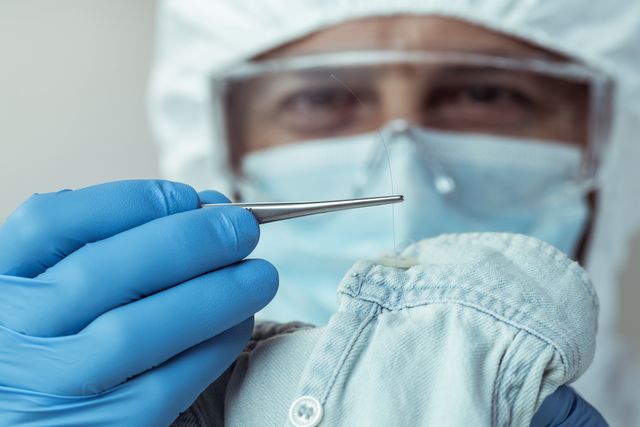- The National Institute of Standards and Technology is analyzing tiny pieces of hair to build individual, nearly unique protein profiles.
- Hair forensics has been subjective and error riddled, but protein profiles could change that.
- The most likely initial use for this information is to confirm a suspect, not to identify them on its own.
Science reports that scientists have identified people using short lengths of a single hair strand, without attached follicle or skin cells. The published results appear in the Journal of Forensic Sciences, explaining a new technique that requires about 1 percent of the previous threshold for making a hair match. The scientists used spectral analysis to compare data they obtained by running pulverized hair through a mass spectrometer.
Hair contains identifying collections of proteins called genetically variant peptides (GVPs), which aren’t unique the way fingerprints and DNA are but can still be used to rule out suspects. “Protein sequences are highly individual, but there’s still a chance—one in one million or even one in ten million—that two people share the same one,” Science reports.
A hair sample alone might, extremely rarely, implicate someone who isn’t related to a crime. But most forensic science involving hair already involves comparing something you find to a sample you already know is associated with a specific person—the same way fingerprints alone don’t mean anything. The odds are much greater that hair samples will help rule someone out. To that end, the researchers on this study, who are from the National Institute of Standards and Technology (NIST), are continuing to add to their library of GVP profiles.
The idea of using GVPs to make matches isn’t new, but previous techniques involved basically destroying the hair strands and hoping enough proteins survived to be able to identify. This made it more of a crapshoot than a science, and incomplete data can lead to guessing or even opposite conclusions. The NIST team can preserve much more of the identifying material while also making it easier for scientists to study.
Hair isn’t the only way to obtain GVPs from suspects or victims, but often it’s the easiest one to find at the scene. Scientists can also use bones, but a suspect isn’t likely to leave a bare bone behind. Fingerprints can contain GVPs, but this isn’t yet common practice compared with studying the patterns of fingerprints or scrubbing them for DNA material. Just one part of one strand of hair is enough for scientists to study its GVPs.
There are drawbacks, though. To treat and analyze even a tiny piece of hair takes about a day, which is a lot of time in a serious criminal investigation. If investigators want to arrest someone or obtain a warrant, waiting this long may not be feasible at all. The research team is careful to avoid any blanket recommendations in their paper, and to date, no hair GVP information has been admitted into court as evidence.
Instead, they offer optimism about the possibilities for a larger library of peptide samples as well as the potential to combine this evidence with other forms as a way to triangulate toward or corroborate evidence for a suspect. “In other words,” concludes the press release, “if a hair is found at one crime scene and a bloodstain is found at another, investigators might be able to assess whether they came from the same individual.”
For now, researchers are continuing to build their database and use that to make better, more detailed analyses.
Source: Science Magazine

Caroline Delbert is a writer, avid reader, and contributing editor at Pop Mech. She's also an enthusiast of just about everything. Her favorite topics include nuclear energy, cosmology, math of everyday things, and the philosophy of it all.













